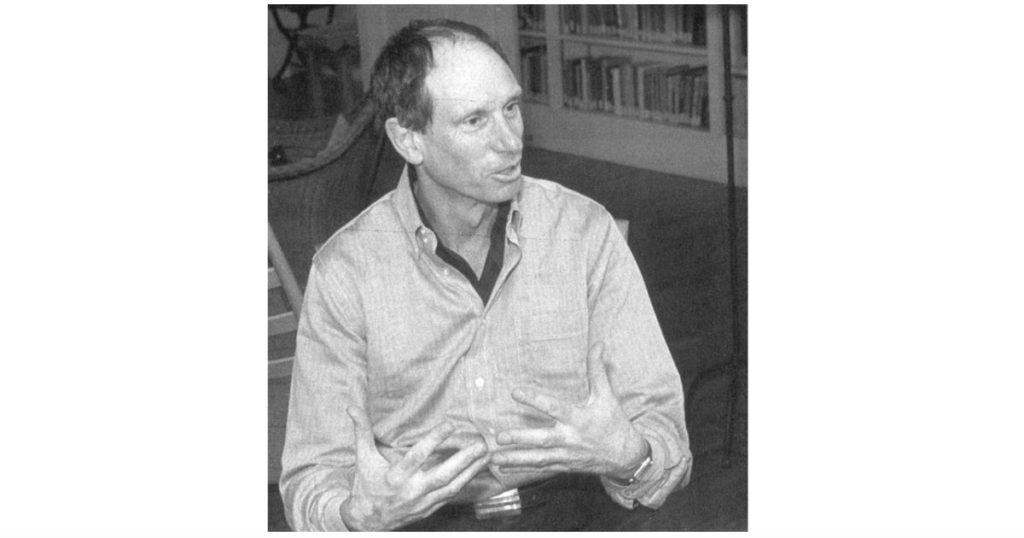Joseph Goldstein grew up in his family’s resort in the Catskill Mountains of New York and graduated from Columbia University, where he majored in philosophy. Courses in Spinoza and Eastern Religion sparked an interest in both metaphysics and spiritual inquiry. “I read the Bhagavad Gita, and the whole notion of non-attachment—of acting without attachment to the fruits of the action—just made sense to me.” He went to Thailand with the Peace Corps in 1965, met teachers of vipassana meditation in the Theravada tradition, and spent most of the next eight years in Asia. In 1975, he, along with Sharon Salzberg and Jack Kornfield, cofounded the Insight Meditation Society (IMS), in Barre, Massachusetts, one of the first vipassana residential retreat centers in the country. In 1989 he also helped establish the Barre Center for Buddhist Studies. The author of The Experience of Insight: A Simple and Direct Guide to Buddhist Meditation; Insight Meditation: The Practice of Freedom; and co-author of Seeking the Heart of Wisdom, Goldstein is now working on a new book, tentatively titled “One Dharma.” He is also involved in planning the Forest Refuge, a retreat center adjacent to IMS that will hold thirty to fifty people doing long-term intensive meditation practice—a next step, he says, for dharma practitioners in the West.
What drew you to Munindra, your first teacher? One of the things that I’d been looking for at Columbia, and not finding in philosophy, was a way to live life wisely rather than just think about it. I wanted some way of making sense of all the uncertainties I was feeling, a way of finding out who was behind the rush of thoughts and emotions that I was taking to be myself. When I was in the Peace Corps in Thailand, I began going to Buddhist study groups. One of the monks suggested I try meditating. At first, I sat for just five minutes. But even in that short time, I realized that this was what I had been looking for—a way to look inward at my own mind.
Then, just a few weeks before the end of my Peace Corps stay, I was sitting in a friend’s garden and he was reading to me from The Tibetan Book of the Great Liberation. At one point, when the text was speaking of the “unborn nature of the mind,” there was a sudden and spontaneous experience of the mind opening to… zero. Immediately following, a phrase of wonderment kept repeating in my mind—“There’s no me, there’s no me.” This experience shifted things radically. Of course, since then, feelings or thoughts of a sense of self have arisen many times, but still, there is the knowing that even the sense of self is selfless—that it’s just another thought. At first, this new way of viewing things was very disorienting because it was so unexpected and outside any context of systematic practice. When I returned home, I tried to meditate on my own but realized pretty quickly that I needed a teacher. That’s when I decided to go back to Asia, and I met Munindraji in Bodhgaya.
One of the first things he said to me, and what really hooked me with its obvious truth, was, “If you want to understand your mind, sit down and observe it.” When I practiced meditation with Munindra, there was no form, there was no ritual, there was nothing to join, there was no cultural overlay. There wasn’t even a meditation course. He’d simply give teachings every day about meditation and then we’d go off on our own to sit.
He didn’t structure your time for you? Not much. Essentially, he told us just to spend the day sitting and walking. Munindraji’s mantra in teaching was: “Be simple and easy.” He must have said that thousands of times: “Be simple and easy; take things as they come; be simple and easy.”
When I started intensive meditation practice with Munindra, I saw clearly that I didn’t have the foundation in practice for that previous experience of emptiness. I had to start at the beginning and slowly develop some strength of mindfulness and concentration. I was not one of these people who are naturally concentrated. In the beginning I would sit, and an hour later I would get up, having been lost in thought almost the whole hour. So I had to put in a lot of hours to even begin to get a sense of what concentration was. One practice that helped a lot in this development was an intensive period of lovingkindness meditation—metta, in the Pali language. This served not only to strengthen the quality of lovingkindness—which I felt needed a bit of work [laughs]—but also helped to develop stronger concentration in the mindfulness practice.
You also studied with the vipassana master Goenka. What influence did he have on you? Goenkaji distilled most of the essential teachings of Buddhism into a ten-day retreat, which was a very good structure for introducing Western students to meditation practice. The courses were very popular and they became the models for Sharon [Salzberg], Jack [Kornfield], and myself when we began to teach in the United States. As a teacher, Goenkaji was much more formal than Munindra. I remember how it felt so strange at first to bow when Goenka entered the room. But I got to love bowing—it’s just an expression of faith and devotion and respect, and I do have enormous respect and appreciation for him.
Did you leave Munindra to sit with Goenka? No. Munindra was very open-minded. When people wanted to study with other teachers, even non-Buddhist teachers, Munindra would always say, “Go, explore, investigate. The Buddha dharma doesn’t suffer in comparison to anything.”
You’re part of a group of American teachers who invited the Burmese teacher U Pandita Sayadaw to Barre. How did he affect your practice? U Pandita brought tremendous rigor to our practice. He’s a very demanding teacher, like a tough old Zen master. He wasn’t there to make us feel good or happy or comfortable. His teaching was all about liberation, walking the path to some level of completion. He’s a spiritual warrior and he expected all of us to be warriors as well.
In 1984 we asked him to teach a three-month retreat at IMS and over the next eight or nine years I sat with him in Burma, Nepal, Australia, as well as in this country. That first year was especially tough. All the yogis (meditators) saw him for interviews six days a week and had to tell him how many hours we sat, how many hours we walked. We also had to describe very precisely what was happening in our meditation, without any interpretation, judgment, or assessment. That way of reporting demanded a great closeness of attention to what was actually going on. One of U Pandita’s great strengths was his ability to track our practice with amazing precision: He’d know day-to-day, moment-to-moment where we were.
We also had to be able to really surrender to him, to his style and his way. He was not at all interested in debating with us. From the Burmese point of view, one of the great virtues of a student is obedience. Now, that’s not a highly valued virtue in America—we’re not so big on obedience [laughs]. But to really work well with him took surrender and saying, “Okay, I’m not here to argue. I’m here to learn.”
Do your students argue with you? Sometimes. But I think I have a softer approach than U Pandita. I teach more in Munindra’s style. Munindraji was very gentle and open. He didn’t enforce a form, a discipline. But what I saw from working with him is that, even though it may take a little longer, if we are sincere in our efforts, self-discipline can come out of the practice itself, because it’s what we most want to be doing. In those early years with Munindra, for months at a time he would be away and I would just be meditating by myself—I was so enthusiastic and happy and grateful to have the opportunity to practice. The joy of this way of dharma practice is the inspiration now for developing the new Forest Refuge.
But what form is best really depends on the person and the time—for some the carrot, for some the stick. The Buddha talked about this. He gave an image of training a horse. For some horses, just the shadow of the whip is enough; for others a slight touch spurs them on; and others really need to be whacked, metaphorically speaking [laughs]. When I began practicing with U Pandita, I think it was time for that whack.
In recent years you’ve been studying with some Tibetan teachers. What inspired that? In the early nineties, our old friend Surya Das, whom we knew from India, had come back from two three-year Tibetan retreats. He told us about his practices and encouraged us to meet his teachers, particularly two great dzogchen masters, Tulku Urgyen, who died recently, and Nyoshul Khen Rinpoche. Surya Das had done some vipassana practice before his Tibetan retreats, so I think he felt that we would also have a connection with the dzogchen teachings.
What’s the connection? The connection is awareness and freeing the mind. In vipassana, there’s a great emphasis on the objects of awareness and being mindful of them. We pay attention to the breath, to thoughts, to sensations, and notice their impermanent, insubstantial nature. In dzogchen there’s less emphasis on the object and more on recognizing the empty nature of awareness and resting in that.
What do you mean by the “empty nature of awareness”? In different traditions this phrase might be explained in different ways. One way of understanding it is that when one looks for awareness, there’s nothing to find. It’s invisible, formless, groundless, and yet there is a cognizant capacity—there’s knowing. In dzogchen, this is the union of awareness and emptiness. The “pointing-out instructions” that a qualified dzogchen master will give in a variety of ways help the student to recognize this nature of their own mind.
Is empty awareness the same thing as mindfulness? In the dzogchen tradition a distinction is made between fabricated and unfabricated mindfulness. Fabricated mindfulness is the conditioned state of mind that takes note of an object. Unfabricated mindfulness is the nature of mind itself. We can use fabricated mindfulness to bring us back to the recognition of the mind’s empty, aware nature.
What was your experience of Surya Das’s teachers? We went to Nepal and met Tulku Urgyen, a really wonderful teacher. He was crystal clear and very generous in offering the essential teachings of dzogchen. This was a little unusual, since often, in the Tibetan tradition, you have to go through a much longer process of commitment to the teacher and many preliminary practices. Around the same time, Surya Das also set up a two-month retreat with Nyoshul Khen Rinpoche at Dai Bosatsu, the Zen monastery in upstate New York. Khen Rinpoche exemplified the “crazy wisdom” aspect of practice—spontaneous, unpredictable, and wonderfully humorous. There we were, in this beautiful, classical Zen monastery, with Zen, vipassana, and Tibetan practitioners all learning from a great dzogchen adept, each in our own style.
Two major things happened to me at that retreat. One is that I really struggled with the differences between vipassana and dzogchen. Because even though the dzogchen teachings, just like vipassana, felt resonant with my experience, it was saying quite different things about the nature of awareness and the mind.
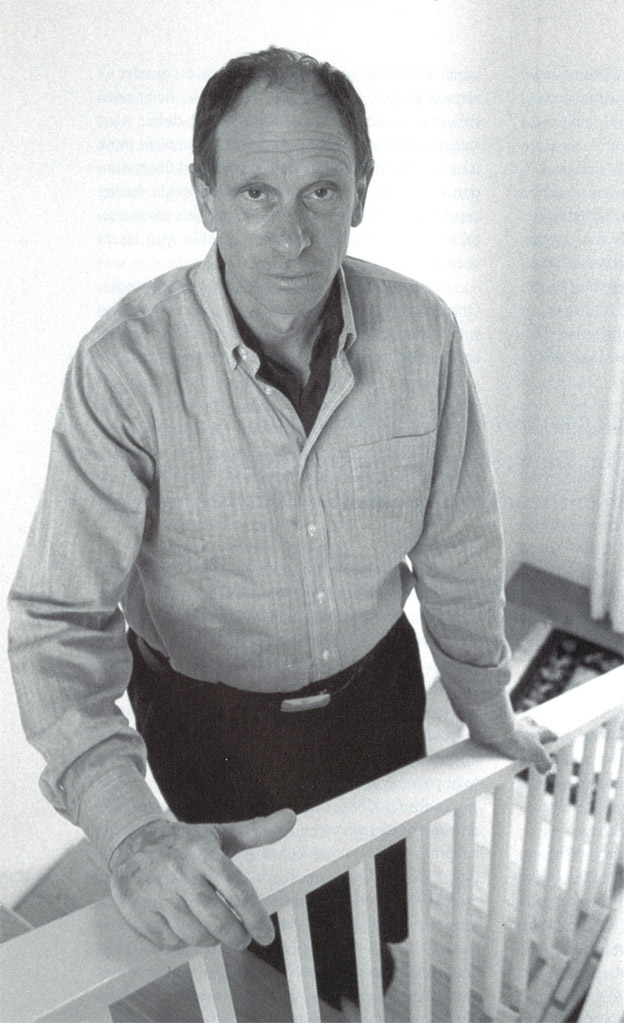
What was the difference? In the Burmese system, liberation involves transcending awareness. In dzogchen, liberation is recognizing that the nature of mind is awareness itself. These are two quite different ways of expressing things. I spent a month of that retreat trying to figure it out, trying to decide who was “right.” I finally came to realize that I could understand both systems as skillful means rather than as statements of absolute truth.
Well, that was a huge relief. But, of course, then the question arises, “Well, skillful means for what?” What I’ve come to understand more deeply over the years—and what I think is supported by the teachings in all of the Buddhist traditions—is that the liberated mind is the mind that does not cling to anything. In one discourse the Buddha said, “Nothing whatsoever is to be clung to as I or mine. Whoever has realized this has realized all the teachings.”
All the different methods and metaphysical systems can be seen as skillful means to accomplish the mind of no-clinging. This understanding really freed me from attachments to metaphysical models that I didn’t even know I’d had. I’d been so completely immersed in the model of the Burmese teachings that when I came into contact with a different model, it became a huge conflict. I had just assumed that the particular way we speak of things was the truth, forgetting that the words were just skillful means for experiencing the mind that doesn’t cling to anything. That’s where the freedom is.
The other thing that was very transformative was Nyoshul Khen Rinpoche’s teachings on bodhicitta, the enlightened heart/mind (in some Asian languages the word for heart and mind is the same). He gave one talk on relative and absolute bodhicitta and something clicked in a way that I had not understood before. Relative bodhicitta is the aspiration to get enlightened in order to liberate all beings. Absolute bodhicitta is the nature of the mind itself, that union of emptiness and awareness. What opened me was seeing that relative bodhicitta—the Bodhisattva Vow—was the expression of the absolute. Previously, I had understood the Bodhisattva Vow from the place of someone doing something to liberate all. I could appreciate the Buddha’s doing it, but I could not imagine that I would ever have the capacity or the strength or the perseverance to save all beings! So I put it aside as just a nice idea.
On this retreat, by seeing that relative bodhicitta was the expression of the absolute, I could understand the Bodhisattva Vow in a way that made sense to me personally. I understood that compassionate activity is the expression of the wisdom-mind of selflessness. It wasn’t me taking on all beings. The task is just to get the self out of the way, and simply let the heart/mind of wisdom and compassion express itself. Well, that was just wonderful.
From that retreat on, I’ve been trying to bring more of the bodhicitta aspiration—may our practice be for the benefit of all, may we awaken for the benefit of all—into the vipassana teachings.
Do you see it making a difference? I feel it’s made a really big difference. In vipassana teachings there’s the implicit understanding that the practice will benefit not only oneself but others as well. In the bodhicitta teachings, this is made explicit and becomes the very motivation for practice as well as being its outcome. The bodhicitta aspiration makes the vipassana teachings tremendously expansive, and emphasizes the compassionate aspect of emptiness. So it’s been very enriching for my own practice and teaching.
And you’ve resolved the seeming conflict between the two traditions? When I could bring all the teachings back to the mind of no-clinging it felt like a great refuge. I don’t think any school of Buddhism would argue with that. There’s no school that says, “Cling.” Liberation is about cutting, or dissolving, or letting go of, or seeing through—choose your image—the attachment to anything. The description of the mind of no-clinging may be different in the different schools, but the experience of the mind of no-clinging is the same. How could it be different?
How did you settle the contradiction between the Burmese and dzogchen notions of awareness? You said the Burmese aims to transcend awareness into the “unconditioned,” or “nirvana,” which they would describe as the cessation of consciousness. But in dzogchen, there’s no possibility of transcending awareness since it’s the very nature of mind. I’ve had intimations that perhaps at a certain point these concepts of awareness and of transcending awareness are themselves no longer applicable: The actual experience may be beyond that duality. On one level of experience what may seem to be a conflict, on another level may be resolved through a deeper understanding.
How have your teachers responded to this intermingling of traditions? Within each tradition there’s a liberal-conservative spectrum. Some teachers emphasize preserving the purity of a tradition, and others are more open and engaged with other perspectives. I genuinely don’t believe that one approach is right and one is wrong. They each serve different types of people and temperaments, and each approach may also be appropriate at different times in one’s practice. There are dangers and strengths in each.
What is the danger of openness? Confusion. People can pick a little of this and a little of that and not go deep. Or we can begin to pick and choose what parts of the teachings we like or are comfortable with and discard the rest. This could lead to diminishing of the power and scope of the teachings. But if we integrate aspects of different traditions from a deep place of practice, then the traditions can support each other and be wonderfully harmonious.
You often suggest that students be aware of awareness itself, of knowing. Yet you never use the dzogchen word for awareness, “rigpa.” Is it the same as bare attention? This is a good example of the potential for confusion, of bringing terms from one tradition into another. Early on in my dzogchen practice I went to see one of the great dzogchen masters, Dodrup Chen Rinpoche, and I asked him some question about rigpa and nirvana: Are they the same? Are they different? He said that it’s very difficult to make these comparisons, because each system may use the same words in different ways. Within the Tibetan tradition, the word “nirvana” may be used very differently than the same word in the Theravadin tradition. So care is needed.
There is an awareness in the dzogchen view that is the nature of mind. It’s completely free of identification with anything, free from any fixation on an object. There’s another aspect in dzogchen of knowing where there is some level of identification with, or attachment to, something. It could be attachment to some object of experience, or it could be a fixation on awareness itself. But it’s no longer just the naked face of awareness, the innate wakefulness of the nature of mind.
One of the images used in some Tibetan texts is that of water and ice. Water is used as an image for the awareness that is the nature of mind (although as an image water is still too much of a thing). Ice is the mind that’s solidified in one way or another. Great care is needed in distinguishing between water and ice, because sometimes what we thought was water turns out to be slush – there’s a little bit of ice in there. And yet at the same time—and this is what’s so interesting—the nature of ice is water. The nature is the same, though it’s not manifesting in the same way. This is another way of saying that even the hindrances of mind like desire, fear, or doubt are themselves essentially selfless and insubstantial.
In vipassana, with regard to bare attention, in its purest, freest form, one could equate bare attention with this mirror-like wisdom of the mind: It just simply knows. But bare attention can also refer to an equanimous observer, someone who is being attentive. Well, if there’s a sense of an observer, no matter how subtle, it’s ice, not water. So even with a phrase like “bare attention” you would have to be precise about what you mean.
Why do you “never” use the word rigpa? I have enormous respect for the different lineages and traditions, and I don’t at all consider myself a dzogchen teacher. Some of the teachers I studied with particularly made the point that rigpa is a term that’s part of the context of the whole dzogchen teaching, so to take it out of that context feels wrong.
I feel more comfortable using the phrase “the nature of mind” as an expression of my own experience and understanding. I like that because, first, it implies that it’s not a thing; it’s the nature of the mind—it doesn’t reify it. And it’s poetic and deep and inviting of exploration. It’s just the nature of mind—it’s not Tibetan or Burmese or Indian.
How do you relate to aspects of dzogchen that seem to be at odds with the liberal edge of vipassana? For instance, that what makes it possible to enter the spacious mind of dzogchen is devotion to the guru. Guru devotion is a major aspect of that tradition, and it’s a tremendously effective way of surrendering the sense of self and the sense of “I.” It’s a more refined expression of what I was talking about before with U Pandita and the quality of obedience. That’s really what the obedience is about. In the act of surrender, you let go of your ego struggle.
But within the Tibetan tradition, it’s said that rigpa—the union of emptiness and awareness—is the true guru. So on that absolute level of understanding, guru devotion is the surrender to this experience of the nature of mind itself. And on the relative level, there’s the practice of guru devotion where the guru is the embodied Buddha.
We can be limited by attachment to either of these perspectives. The real maturing of practice, I think, is understanding both the relative and absolute levels, understanding their differences and understanding their union—exactly like water and ice. They’re different on one level, and yet they’re the same. The relative is not different from the absolute. And yet each has to be respected and practiced from its own side.
Over the years, your joy in the dharma seems more and more apparent. What sums it up for me is a Tibetan word you use about the dharma, “Emaho!”—“how amazing!” Well, the more I’ve gotten out of any particular metaphysical model, the more I have this wonder at the nature of our minds, at the possibility of freedom in the very middle of our suffering. It is truly amazing.
And yet for many people, these models are immutable and unbridgeable. Oh, there’s tremendous sectarianism. That’s why I’m working on a book now tentatively called “One Dharma.” I am inspired by my experience of how different traditions can come together in practice and want to try to communicate that. Because I don’t think there really is just one approach. There are different facets of this great jewel of the dharma. At different times, different aspects become relevant. But there’s a way of holding them as a unity. That’s really exciting to me. I’m just now beginning to teach from this place. And, for all the unresolved questions about the ultimate nature of the fully enlightened mind, I use a surefire magic mantra—”Who knows?”
But I would like to reiterate that I think there’s enormous value in preserving each tradition in its own purity, with its own integrity. And I think there’s a way, as well, of having them meet.
You’ve written about a few experiences that made you think you’d gotten it!—enlightenment—and the point of the stories is that there’s always further letting go. Absolutely. It feels to me that practice is a process of ripening, like a fruit ripening on a tree. Chinul, an eleventh-century Korean Zen master, described the path as “sudden awakening, gradual cultivation.” He gives value to those moments when we suddenly awaken to the nature of mind, but then we need a gradual and further cultivation of wisdom and compassion.
In a recent talk you said that the path to liberation “is a science as well as an art—it’s a path that’s open to everyone.” It is. The path of awakening is extremely well mapped, and it’s mapped in different ways by different traditions. At certain stages maps can be useful; they point out the way. But at other stages they can be a big hindrance, because we often get caught up in interpretation and judgment: “How far along am I?” “Am I there?” These thoughts simply strengthen the sense of self, while the whole path is about dissolving it. And particularly in our Western culture, which is so competitive and judgmental, instead of adding more fuel to the fire of self-judgment—“Oh, where am I? I’m not good enough”—we could see our entire spiritual journey as this wonderful flowering of understanding. We just keep going; we just keep watering the Bodhi tree of wisdom.
Goldstein’s Teachers
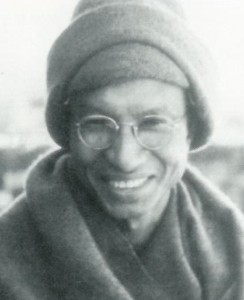
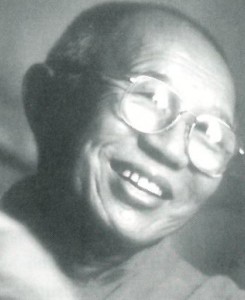
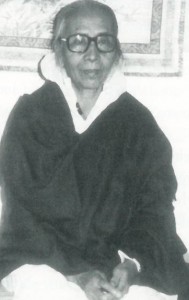
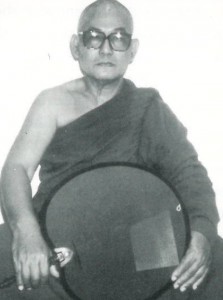
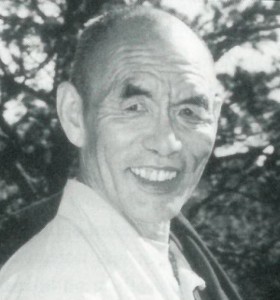
From top to bottom: Munindra; Tulku Urgyen Rinpoche; Dipa Ma; Sayadaw U Pandita; Nyoshul Khen Rinpoche.
Thank you for subscribing to Tricycle! As a nonprofit, we depend on readers like you to keep Buddhist teachings and practices widely available.
